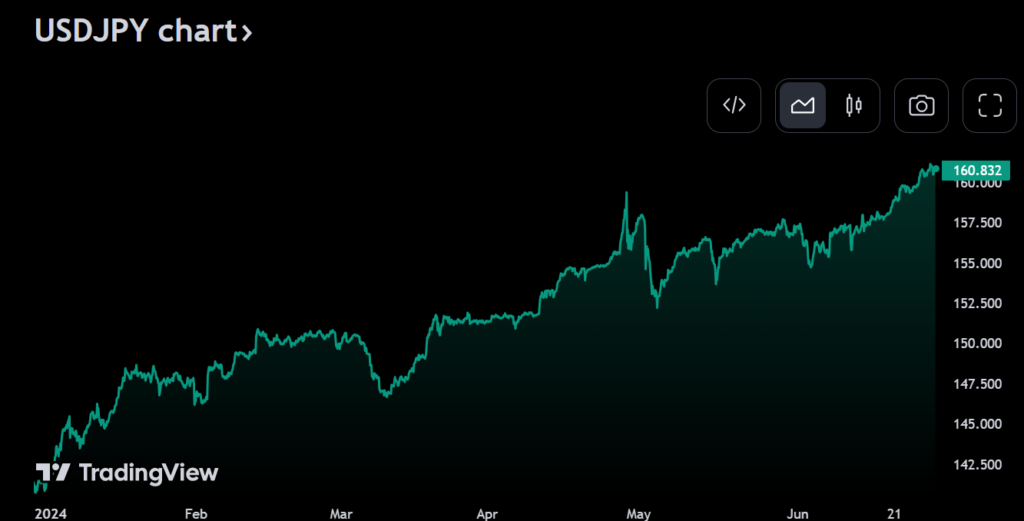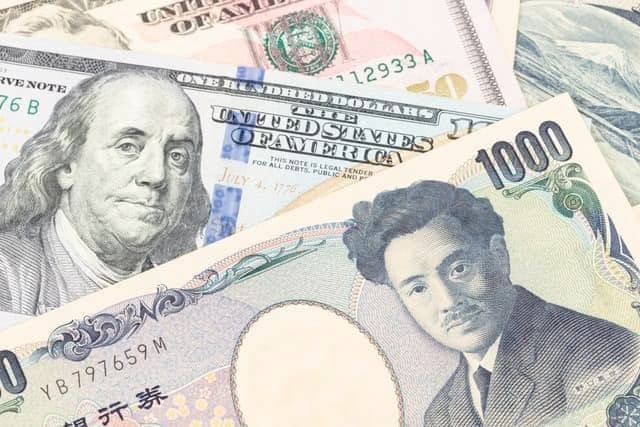The Japanese yen (JPY) has dropped to its lowest level in 38 years, now trading at $0.0062 to the U.S. dollar (USD) as of June 28.
This marks the yen’s weakest point since 1986, highlighting a significant drop amid policy shifts and interest rate differentials.
Weakening Yen: Policy shift and interest rate gap
A significant policy shift by the Bank of Japan (BOJ) in March triggered the yen’s downward spiral. The BOJ ended its negative interest rate policy and yield curve control, measures that had previously kept the yen artificially low.
Following this policy shift, the currency breached the 150 mark against the dollar, escalating to 160 in late April before intervention by Japan’s finance ministry.
This, combined with the significant interest rate differential between the U.S. and Japan, has accelerated the yen’s depreciation.
Japan’s response and market skepticism
Japan’s finance ministry attempted to intervene by purchasing yen between April 26 and May 29, spending 9.7885 trillion yen ($62.25 billion) in the process. However, these efforts failed to halt the currency’s slide.
Recent leadership changes within Japan’s financial institutions, with Atsushi Mimura taking over as the top currency diplomat, haven’t instilled much confidence either ,as reported by Nikkei Asia.
Mimura, currently the director general of the Japanese finance ministry’s international bureau, is expected to take over on July 31. Additionally, Hirotsugu Shinkawa, director-general of the finance ministry’s budget bureau, will replace current vice finance minister Eiji Chatani, effective July 5.
Impact on currency markets
Over the past year, the Japanese yen has steadily weakened against the US dollar, largely due to the widening interest rate differential between the two countries.
Conversely, the U.S. Dollar Index (DXY), which measures the dollar against a basket of six foreign currencies, remained in positive territory.
Despite news of cooling inflation in the world’s largest economy sparking speculation that the Federal Reserve might cut interest rates later this year, the dollar has appreciated by 14% against the yen this year, driven by wide interest rate differentials.

Early Friday, the dollar reached a 38-year high of 161.27 yen before sliding to 160.285 yen due to inflation data.
The dollar/yen pair has been highly sensitive to U.S. economic data, with the dollar showing monthly and half-yearly gains of 2.16% and 13.57% against the yen, respectively.
The Japanese yen’s decline underscores the profound impact of policy shifts and interest rate differentials on currency markets, with the yen likely to remain under pressure amid ongoing economic developments.
Disclaimer: The content on this site should not be considered investment advice. Investing is speculative. When investing, your capital is at risk.







